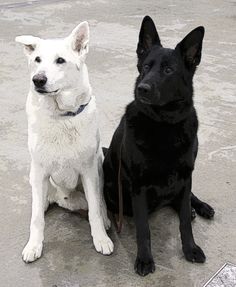Here is a challenging thought – I’d argue that the greatest obstacle to great design is corporate culture. Therefore, if one understands corporate culture, one could in theory and practice create and deliver much better design.
This is a very powerful concept. Several years ago I began collaborating with Edgar Papke, who is a well respected organization leadership psychologist and expert in OD and corporate culture. Much of this post is referenced from my work with Edgar, and his book True Alignment.
It’s very difficult to change corporate culture, but you can change design and design processes to best align with corporate culture.
What is corporate culture?
In lay person terms, culture is how decisions are made. Culture guides how we behave, how we work with one another, and how we get things done. Culture guides and influences how each member acts and expresses his or her motivations and desires, and defines acceptable and unacceptable behavior. Therefore, culture drives how we work. In total, these behaviors become cultural norms.
Every company, team and group has a unique culture. So the trick for design and innovation leaders is to recognize this, and align your design team culture to the prevailing corporate culture. Here’s how:
First, recognize that there are three kinds of corporate culture, and their sub-cultures.
1. Expertise-oriented cultures
These companies are about “me”, and rely on individual expertise and competency to get things done. They typically rely on top-down decision making, because the leaders are about “me” too. Also referred to as Achievement-oriented cultures, these stem from our human needs for attention, competency and acceptance. The characteristics of Expertise-oriented cultures include:
- Conceptualize new directions & new concepts
- Leverage expertise and ranking
- Set high standards
- Challenge others & push the limits
- Emphasize what’s possible
- Seek innovation
- Utilize individual incentives
- Push for the optimal solution
- Motivated by competency & control
Some examples of companies with Expertise-oriented cultures include McKinsey, Microsoft, Nike, BMW, GE, P&G, Samsung, Wal-Mart, Ikea and Apple. Imagine, Apply gets away with calling their in-store repair centers a “Genius Bar”; that’s as blatant as it gets at being expertise-oriented. In these companies, individual contributors often have great influence.
If you are presenting design in an Expertise-oriented culture, here’s what you do:
– Leverage individual competency
– Stress how the design is expertise based
– Support outsourced design to experts, and ad-hoc teaming
– Support analytical processes
– Challenge for better and best
– Spur competition amongst design team, or between internal and external
– Reward conceptual thinking
– Leverage status and high achievement
2. Participation-oriented cultures
The Participation-culture orientation is about “we”; it thrives on teams, cross-function work, collaborative problem solving, group decision making, and group involvement in hiring because interpersonal fit is most important. Conflict is often managed collaboratively, and when a leader needs to make a decision or take action, they will typically ask for the teams input. It’s more about the family of the business, and is also referred to as an Inclusion-oriented cultures. The motivation is our human needs for inclusion, importance & significance. The characteristics of these cultures includes:
- Collaborative focus
- Close partnerships
- May have positions of Integrators, Conflict Managers, and Facilitators
- Consensus builders
- Use power of relationships
- Group oriented
- Value working together
Think of companies like Harley-Davidson, Lands’ End and The Walt Disney Company. At Disney, all VP’s are required to work in a customer facing role one day a month. Once I was on a Disney resort and my daughter got sick, so the hotel offered to take us to a doctor. The driver seemed quite knowledgeable, as I asked more questions it turned out the driver was a VP who just chose to be a driver that day; that’s a commitment to participation with customers!
Here’s how to align design in Inclusion-oriented cultures:
– Leverage participation & involvement
– Cross-functional teaming
– Support group processes
– Focus on shared rewards
– Customer focus and partnering
– Reward team accountability & contribution
– Leverage involvement
3. Authenticity-oriented cultures
The Authenticity-oriented culture is all about purpose. These companies are values-driven, caring, purpose-centered and optimistic. It’s about “we care”. What really matters is what the company stands for, and that’s the draw for employment. This orientation links to our human needs to feel accepted, to be caring, our physical wellbeing and our personal actualization. Some of the characteristics include:
- Cultivating
- Development of self and others
- Catalyst for possibilities
- Idealists
- Stewards of purpose and values
- Commitment builders
- Caring
- Helping others succeed and grow
- Appeal to higher-Ideal and vision
- Motivated by admiration and affection
Think of companies like Starbucks, The Body Shop, Celestial Seasonings, Blue Diamond Almonds and Whole Foods Market. Whole Foods, a natural grocery chain, doesn’t have any wayfinding signage regarding the isles. The reason being, when a customer asks for guidance, employees stop what they are doing and personally escort you to the proper isle and location, and even discuss the options with you. It’s not so efficient, but what matters is that the customer is being cared for, and the employees are providing care.
How to align design in Authenticity-oriented cultures:
– Leverage personal and group empowerment & self-actualization
– Reinforce the higher ideal
– Explore the intuitive
– Trust in the organic process
– Emotion and meaning matter
– Focus on openness and trust
– Let people play and be creative
I know designers love being different, me too, but if you can understand corporate culture, you can be more strategic in creating and presenting your design, UX and innovation projects, and be more likely to get them thru the system intact. What better way to realize your creative vision?
What kind of corporate culture do you work in? How are you aligned to culture?
